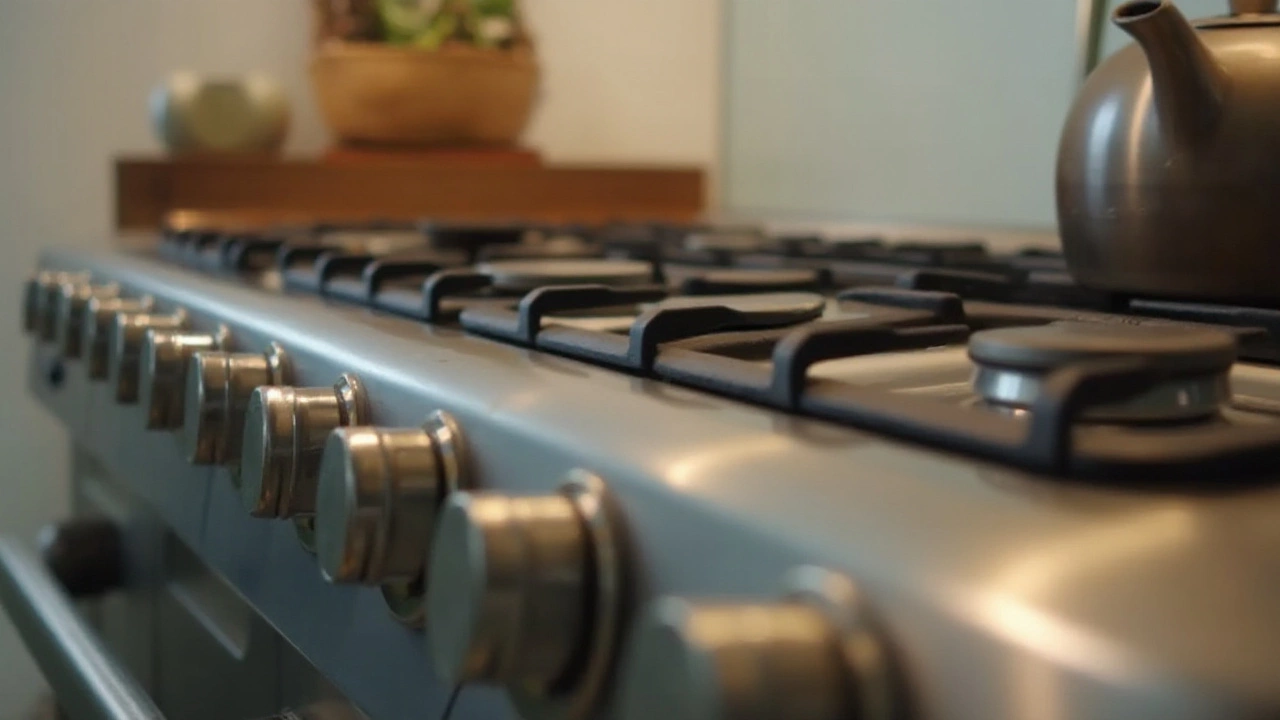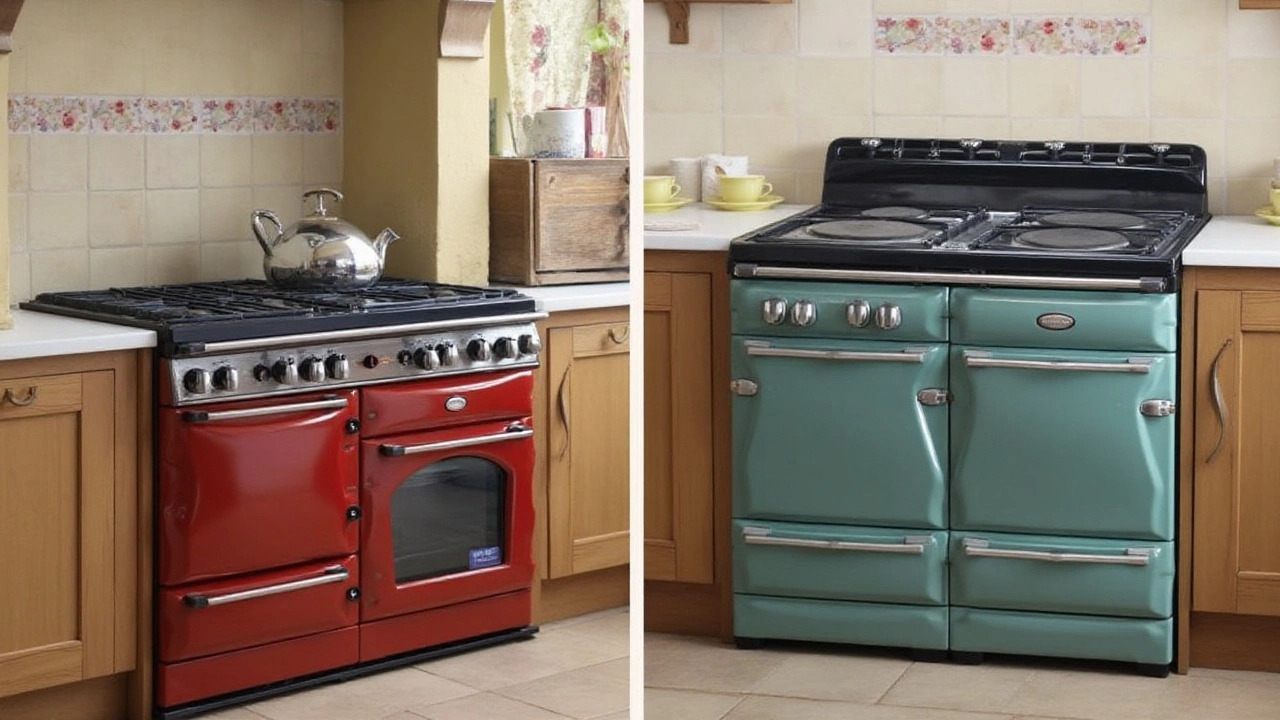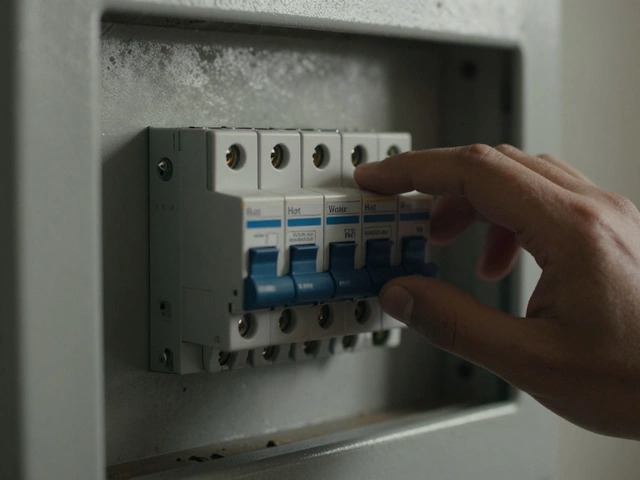With the hum of your electric stove, cozy dinners and delightful baked goods come to life. But have you ever wondered how long your trusty kitchen companion will last? It's not a secret that every appliance has its span, but with a bit of attention and care, you can enjoy its service for more years than you might expect.
Electric stoves typically have a respectable longevity, often ranging from 13 to 15 years. Yet, their true lifespan hinges on various elements, from how often they're used to the maintenance routines employed. A handy guide awaits you in the ensuing paragraphs, filled with useful information and practical advice to ensure your stove stands the test of time.
From deciphering the telltale signs that your stove needs a helping hand to easy maintenance tricks, we'll tackle it all. Keep your electric stove sizzling effectively and efficiently by diving into the nature of what makes them tick, keeping those culinary creations coming for as long as possible.
- Understanding Electric Stove Lifespan
- Factors That Affect Longevity
- Signs Your Stove Needs Repair
- Maintenance Tips to Extend Life
- When to Replace Your Electric Stove
Understanding Electric Stove Lifespan
Electric stoves are among the most reliable kitchen appliances, and their lifespan brings both assurance and intrigue. Typically, an electric stove can function well for 13 to 15 years before it starts exhibiting signs of aging. The longevity, however, does not solely depend on a number on the calendar but on how well you engage with its needs over time. The interior and exterior components of the stove each tell a story of durability shaped by frequency of use, environmental conditions, and the attentiveness of its owner. Consistency is key, and those who tread the balance between diligent maintenance and optimal usage often report the most favorable outcomes.
A deeper dive into the anatomy of an electric stove elucidates why these appliances exhibit such dependable stamina. The stovetop, where the magic happens, consists of heating elements calibrated for efficiency and safety. With frequent use, these elements experience wear that, if unchecked, can compromise their integrity. Regular inspection and cleaning can arrest this wear early, significantly adding to the stove’s life. Behind every electric stove is a complex yet resilient system of wiring and controls ensuring that it heats your meals uniformly. Manufacturers maintain rigorous standards, adopting innovations in materials and engineering to extend the life expectancy of modern stoves by leaps and bounds.
One might wonder about factors influencing an electric stove’s operative lifespan. Notably, the right voltage settings and usage patterns play an instrumental role. Ensuring an appropriate power supply is crucial to prevent wear on the stove’s internal circuitry. Mishaps in this area might lead to issues prematurely, akin to a candle burning twice as bright only to burn out sooner. Regular and professional maintenance checks are recommended to preempt potential electrical troubles. These attention points aside, even simple practices like avoiding excessive spills and proactively addressing minor faults can yield surprisingly tangible benefits. As cited in a recent appliance reliability study by Consumer Reports, "performing regular maintenance extends the lifespan of stoves by an average of 3 to 5 years."
The kitchen climate also makes its mark on the life expectancy of an electric stove. Factors such as humidity and cleanliness contribute to its operational stability. Meanwhile, seasoned users know that seemingly mundane activities, like gently wiping the stove surfaces post-cooking, guard it against accumulations that cause long-term damage. Families that cook frequently should become familiar with this mantra—‘care as much as you cook.’ The interconnected dance of mechanics and environment dictates how an electric stove fares in the longer run, leaving its owner more in control than one might surmise without this understanding.
Factors That Affect Longevity
Electric stoves, like all household appliances, thrive or falter based on a confluence of factors. Understanding these various influences can be instrumental in maximizing the life expectancy of your dedicated culinary tool. The consistent wear and tear from daily cooking can naturally lead to a gradual decline if not managed with care. Frequency of use plays a pivotal role; an electric stove that sees near-constant use in bustling family kitchens might not last as long as one utilized less frequently by a single occupant. Here, the very nature of the use, such as preparing meals that require high heat or constant simmering, contributes significantly to the stress endured by the appliance's components.
Another crucial factor is the quality of materials and construction used in the manufacture of the electric stove. Higher-end models often boast robust materials and cutting-edge technology, leading to a longer lifespan. The craftsmanship behind these stoves means fewer problems, less frequent repairs, and subsequently, a more enduring appliance. However, even the most well-made stove demands proper care and attention. Neglecting maintenance can lead to issues like inefficient heating elements or temperamental knobs, which might pave the way for more significant malfunctions down the line.
Environmental elements should not be overlooked either. Humidity and temperature fluctuations can affect the electrical components of the stove, leading to corrosion or shorts. This environmental exposure, particularly in kitchen spaces, indicates that where you place the appliance can make a difference in its longevity. The power supply and installation quality also warrant consideration. Improper installation or fluctuating voltage from poor wiring can drastically shorten the lifespan of an electric stove, leading to frequent malfunctions and potential safety hazards.
Sometimes, words from industry experts shed light on these aspects. As noted by a renowned appliance specialist, "Consistent maintenance, alongside understanding what your appliance endures day-to-day, can reveal to any owner the secret to doubling an electric stove's life."
Such insights remind us that prolonged durability isn’t just a product feature but a shared responsibility between manufacturer and user.
Additionally, manufacturers also offer guidelines and usage instructions that are often overlooked by consumers eager to start cooking. Adhering to these can prevent unintentional misuse which frequently leads to appliance breakdowns. Consider the impact of abrupt temperature changes, which can strain electric coils and result in their premature failure. For avid bakers or those in climates with significant seasonal shifts, understanding and accommodating for these nuances can prevent unnecessary repair costs.
Understanding these factors and how they interact provides valuable insight into achieving a longer lifespan for your electric stove. By being mindful of usage rates, maintenance routines, and environmental conditions, and heeding expert advice, you can keep your stove functioning efficiently for many satisfying years. In doing so, you're not only saving money on repairs or premature replacement but also contributing positively to reducing electronic waste in the environment.

Signs Your Stove Needs Repair
There comes a time in the life of every electric stove when it starts showing signs of needing a bit of extra attention. If you've been relying on your trusty appliance for countless meals, it's bound to experience some wear and tear. But how do you determine when a little hiccup requires a full-fledged repair? Let's explore the telltale signs that suggest it's time for action.
The first sign that shouldn't be ignored is uneven cooking. If your cakes aren't rising evenly or your roasts come out with one side more cooked than the other, it might stem from a faulty heating element. This could mean that the coils aren't heating properly or maintain the heat inconsistently. Another glaring indication could be the stove taking unusually long to preheat, a classic symptom of a burner nearing its end. It's not just inconvenient; it affects the quality of your meals.
Strange noises are voices of protest from your appliance covering everything from clicks and pops to hums and whirrs. These sounds, which often accompany malfunctioning thermostats or dying components, are your stove's way of beckoning for help. Don't dismiss the urgency. Failing to address these noises could lead to a complete breakdown at an inopportune moment. Moreover, if you notice sparking or see small flames when turning it on or off, cease using the stove immediately and consult with a professional.
"Regular maintenance of household appliances increases their lifespan significantly," advises Consumer Reports. "Address issues early to avoid unnecessary complications."
Additionally, the electronic display might be on the fritz, which could affect your stove’s performance. An erratic or dead display might hide the real damage below—temperature control issues or internal wiring faults. Malfunctioning controls or an unresponsive keypad are frustrating issues, complicating what should be a seamless cooking experience. If adjusting the temperature becomes just a hopeful endeavor, you know a repair is overdue.
Odors often accompany malfunctioning stoves, frequently emanating from burning wires or residue within. If the smell persists after cleaning, there's likely a deeper technical issue at play. Keep your nose at attention; it's an intuitive way to catch problems before they manifest visibly. Lastly, if your electric stove trips the circuit breaker repeatedly or shows scorch marks near the controls, the problem demands immediate attention.
Knowing these signs not only prepares you but empowers you to maintain the longevity of your electric stove. Ignoring them, on the other hand, risks leaving you without a reliable cooking companion. So, keep a close eye and a keen ear on your stove, call in professional assistance when needed, and you can extend the life of an appliance critical to your home.
Maintenance Tips to Extend Life
Keeping an electric stove in tip-top shape isn't just about looks or maintaining a spotless kitchen. Regular maintenance can significantly extend its lifespan, ensuring it keeps serving you delicious meals for years. Start by making a habit of thoroughly cleaning your stove after each use. Grease and food particles are more than just messy sights; they can turn into stubborn grime that affects performance when left unchecked. So after the last pot has been lifted, grab a mild detergent and a soft cloth, giving the surface a gentle yet thorough wipe. This simple gesture can drastically reduce wear over time.
Don't forget those burners. Whether it's a stovetop coil or a flat surface, gently scrubbing regularly can prevent residue build-up. Removing and cleaning the burners on a weekly basis is wise, helping to maintain efficient heat distribution. Also, those trusty burner grates and reflector pans? They need love too. Soak them in warm, soapy water at least once a month to remove tenacious grime that hinders their function. Taking this extra step ensures they remain in prime condition, reducing the chance of damage.
Behind the scenes, it's crucial to check on your electric connections. The wiring that powers your stove should be as reliable as your best recipe. An annual inspection performed by a qualified technician can uncover potential issues before they escalate, like faulty wiring or loose connections that might compromise your safety and the stove's efficiency. If you're comfortable and know what you're doing, ensuring the plug and outlet are clean and secure can also help maintain a smooth electrical flow. Remember, electricity is not something to take lightly. Always prioritize safety.
An often overlooked aspect of stove longevity is managing heat settings. It's tempting to crank up the heat, especially when time is short, but as with most things, moderation is key. Overusing high settings stresses the heating elements, shortening their life and potentially causing failures. Opt instead for medium settings when possible, allowing gentle and even cooking that also preserves your appliance's vitality. As the great Julia Child once said,
"Men love to cook with bluster and smoke. It is natural to seek out that which has a spirit akin to one's own." But remember, sometimes finesse wins the day.
Lastly, maintaining a vigilant eye for unusual signs or sounds is paramount. If you notice uneven heating, flickering displays, or odd noises, it might be time for some professional intervention. Catching potential problems early can prevent costly repairs or replacements. Remember, by treating your electric stove with care and respecting its need for regular maintenance, you'll be sustaining not only its life but the joy it brings to your daily cooking endeavors.

When to Replace Your Electric Stove
Making the decision to replace your cherished electric stove can be as challenging as deciding what’s for dinner on a busy weeknight. We form bonds with our appliances over the years, as they faithfully serve the roles of chef’s assistants in our daily lives. However, there are distinct cues and telltale signs that whisper when it’s time to let them retire. Recognizing these signals before they turn into stubborn kitchen emergencies is crucial.
One of the first signs that your stove might be nearing the end is inconsistent heating. If your meals are turning out unevenly cooked, it’s time to pay attention. You might notice that one burner heats up well while another barely manages to warm a pan. Frustrating as it is, this imbalance often stems from worn-out circuitry or elements that are simply past their prime. While sometimes a repair can fix an isolated issue, recurring problems usually signal that age is catching up with your faithful kitchen partner.
Then there’s the problem of skyrocketing energy bills. Even the most loyal stoves become less efficient as they age, consuming more electricity while delivering less performance. If your utility costs are steadily climbing without apparent changes elsewhere in usage, it might be due to your aging appliance. Consider this an important sign that a more energy-efficient replacement might pay for itself in the long run. These savings can be particularly significant if your stove is more than a decade old.
If you find yourself constantly shelling out for repairs, this is yet another signal. As stoves age, parts become harder to come by, and labor costs add up. There comes a point when the cost of fixing a stove rivals, or even exceeds, that of purchasing a new model. Many experts in the appliance repair industry affirm, "When repair expenses surpass 50% of the cost of a new appliance, it's wise to replace." It's a practical rule of thumb that saves you from the headache of recurring breakdowns and expenses.
Safety concerns should never be underestimated. Any signs of electrical malfunctions, unusual sparking, or scorch marks around burners need to be addressed immediately. Such issues not only damage the appliance but pose severe risks to home safety. Prioritizing safety over sentimentality is essential in these cases, and replacing the stove is the prudent choice to prevent potential hazards.
Modern electric stoves come with innovative features that significantly enhance user experience and efficiency. If your current appliance lacks modern conveniences such as touch controls, precise temperature settings, or self-cleaning functions, it might be worth considering an upgrade. These features not only make cooking easier but are designed to be energy efficient, catering to our eco-conscious times.
As you ponder the future of your electric stove, remember it's not just an investment in an appliance — it's an investment in your culinary joy, home safety, and energy savings. Embrace the exciting prospect of a brand new stove that comes with upgraded technology and efficiency, ready to serve your kitchen endeavors and make every cooking experience smoother and more delightful.





